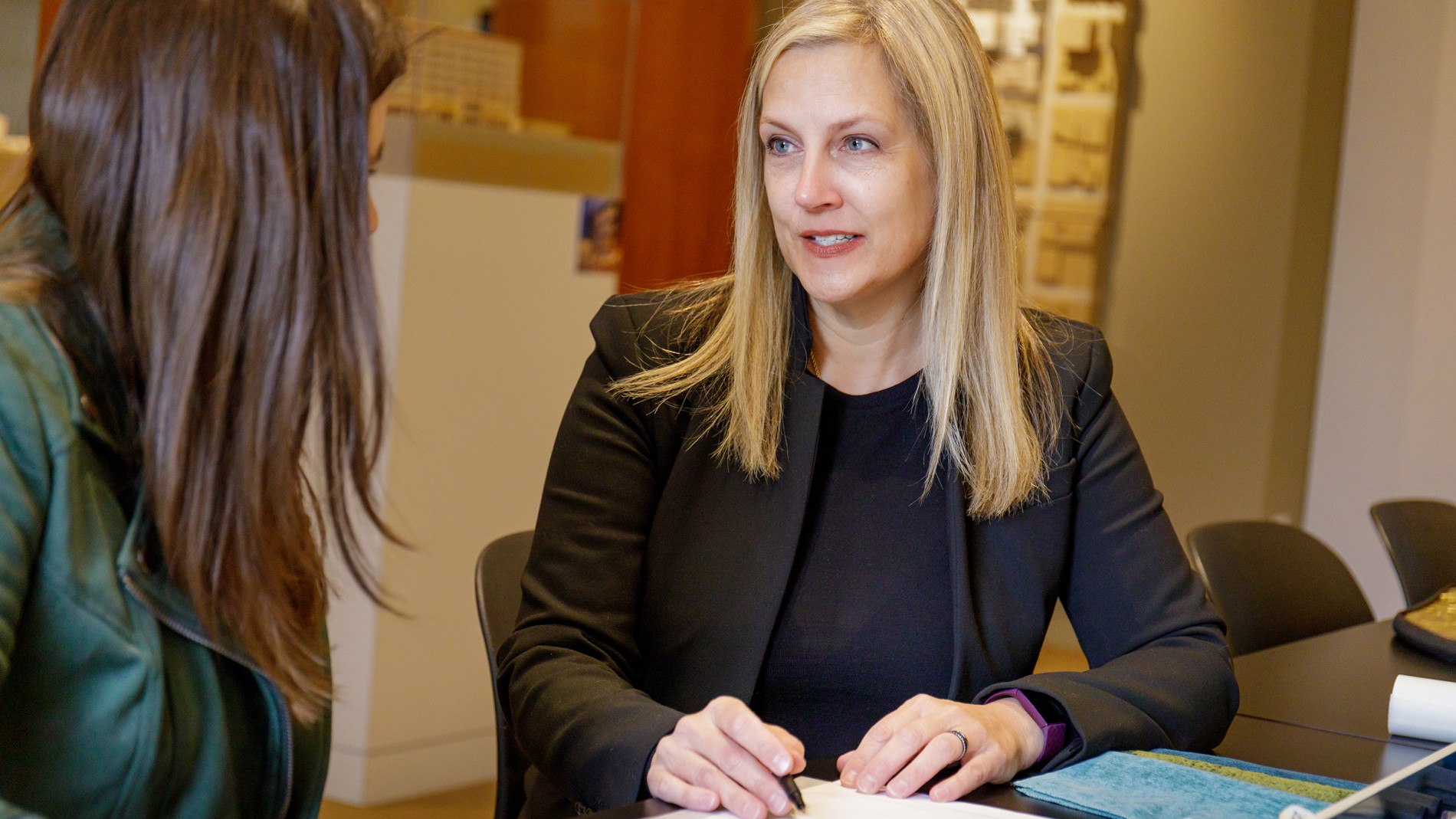
We are delighted to introduce Kristin Spivey, AIA, Senior Interior Architect at Tryba Architects. Kristin is an accomplished architect and interior designer with extensive expertise in the hospitality industry. Her portfolio features national and international resorts and hotels, and she is currently designing the new Marriott Tribute hotel in Frisco, Colorado as well as multi-family projects. We asked Kristin to tell us about her inspirations, design process and how an integrated approach can result in harmonious, connected spaces.
What drew you to interior architecture and design?
My father studied engineering and my mother was artistic. They both had a love and respect for art and architecture which made an impression on me at an early age. As a child I would draw residences in both plan and section (undoubtedly influenced by the custom dollhouse my Great Grandfather built for me!), and while on beach vacations I would forgo the traditional sandcastle for sand resorts.
How does the design process begin for you?
My design process begins by listening, then transforming stakeholder project goals into a visual and written concept narrative. Through this narrative, the purpose of each project intersects with its unique context, resulting in projects profoundly tied to place.
Favorite project:
While living in the former Soviet Union (Riga, Latvia), I managed the major renovation of a 15th century Hanseatic League trading house. During our historic study, we discovered that at one point the building had housed an apothecary featuring large medicinal flowers painted on the façade. We were able to restore the unique interior wooden staircases, expose the wooden hand-hewn beams and original winch, and recreate the two-story painted floral façade. The building was named Zalais Nams, which translates from Latvian to Flower House.
During the same time, I worked on the American and Italian Ambassador residences and Dutch Embassy within a renovated army barracks originally commissioned by Peter the Great. Having the opportunity to bring these amazing historic structures back to life was such a gift.
You draw inspiration from:
Biophilia. I am inspired by the natural world around me—the materials, textures and colors; the calming sights, smells and sounds. In design, the integration of these elements creates harmony, balance and connection. I also find inspiration through fashion and art and their role in influencing the built environment.
Aspirations for your role at Tryba:
I am honored to be a part of this incredible firm and look forward to growing our hospitality practice, collaborating across the multidisciplinary studio and enhancing hospitality influences across all our projects.
Favorite part of being an interior architect:
I have always been intrigued by interior spaces and how their design can affect one’s senses. I find satisfaction in bringing spaces to life—paying attention to refined details and evoking even the most subtle yet profound response.
A piece of wisdom you’d like to share.
Allow yourself to find the segment of our industry that makes your heart and soul sing. For me the complexity of hotels and hospitality projects is motivating, challenging me to create timeless and thoughtful design while ensuring smooth and subtle functionality of the entire project.
What does the future of interior architecture look like?
There is opportunity to enhance our interior spaces and the ways in which we design and experience them by bringing together multiple influences and approaches—from hotel to home, restaurant, office and retail. Throughout project types we will continue to emphasize warmth and hospitality while allowing for flexibility for current and future uses. Connections to nature, a safe and healthy environment and integration of evolving technologies are also imperative for well-being, connection and communication.
Any additional musings on the connection between the industry and the world today:
Humans have an inherent connection to nature—an essential relationship and fascination that has only been emphasized during the past year and a half. We have an opportunity and a responsibility as architects to address this human need while respecting our natural surroundings by conscientiously incorporating nature and its influence into the built environment.